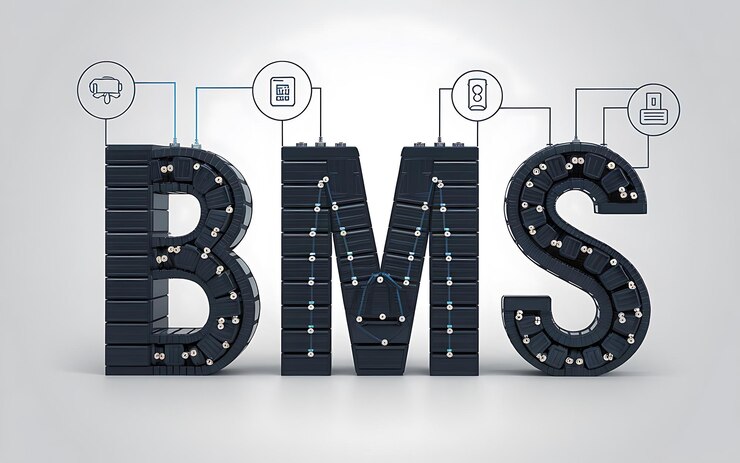Smart Scaling: How AI Is Redefining Cloud Cost Management?

Strong 8k brings an ultra-HD IPTV experience to your living room and your pocket.
Let’s face it—cloud costs have a way of sneaking up on even the most tech-savvy teams. You start small, spin up a few services, maybe a virtual machine or two. Before long, you’re buried in invoices that are as bloated as your data lakes.
That’s where AI steps in not just as a buzzword but as a practical solution for managing cloud resources in real, with intelligence. What used to take hours of manual reporting and number crunching is now being automated, optimized, and even predicted with incredible accuracy.
This blog dives into how AI is reshaping cloud cost management and how businesses—from startups to enterprise giants—are leveraging it to cut waste, optimize performance, and keep the bottom line healthy.
Why Cloud Cost Management Is Getting Tougher?
Cloud environments are inherently dynamic. With services being provisioned and deprovisioned on the fly, variable workloads, and the increasing use of multi-cloud and hybrid strategies, tracking and optimizing cloud spend has become a complex beast.
Some of the main challenges include:
- Lack of Visibility: Without proper tools, it’s hard to see who’s using what, where, and how much it's costing.
- Overprovisioning: To avoid outages, many teams play it safe by over-allocating resources, leading to unused or underutilized services.
- Shadow IT: Teams outside of IT often spin up their own services, driving up costs unknowingly.
- Dynamic Pricing Models: Pricing changes, tiered models, and region-specific fees make it difficult to forecast and control expenses.
Traditional cost management tools help, but they’re often reactive. AI brings a proactive, predictive, and automated layer that changes the game entirely.
AI-Powered Optimization: Going Beyond Spreadsheets
Instead of manually analyzing usage data and guessing future requirements, AI-powered tools bring in automation, machine learning, and real-time analytics. Here's how:
1. Predictive Analytics for Cost Forecasting
AI models analyze historical usage and spending patterns to forecast future cloud bills. These predictions are not just based on static trends—they factor in seasonality, business cycles, and even application-level metrics. This allows finance and DevOps teams to make informed decisions around scaling, budgeting, and purchasing reserved instances.
Example: A retail company sees a spike in compute usage every November due to Black Friday traffic. AI tools flag this trend and recommend instance reservations a month in advance—saving both time and money.
2. Automated Resource Optimization
Through continuous monitoring, AI systems can detect idle or underutilized resources and suggest resizing or decommissioning. Instead of having engineers manually track utilization rates, the system recommends rightsizing in real time.
Cloud-native tools like AWS Compute Optimizer or third-party platforms like Spot by NetApp and CloudHealth leverage AI to help organizations do just this.
3. Smart Workload Placement
AI models consider not just cost but also latency, compliance, and performance requirements to decide where workloads should run—whether on AWS, Azure, GCP, or even on-prem.
By analyzing resource pricing in real time across different regions or cloud providers, AI can help reduce spending without sacrificing performance.
4. Automated Scaling and Scheduling
Many AI tools integrate with orchestration platforms like Kubernetes to automatically scale services up or down based on demand predictions. In addition, AI can schedule non-critical workloads to run during off-peak hours when compute costs are lower.
This is especially useful for applications that require heavy computation, such as training machine learning models or performing batch data processing.
Reducing AI Development Costs Through Smarter Cloud Usage
Building AI solutions is computationally expensive. Model training, in particular, demands powerful GPU instances that can significantly inflate cloud bills if not managed carefully.
By using AI for cloud cost optimization, companies developing AI systems can dramatically reduce their AI development cost.
For example:
- Model Training Scheduling: AI can identify the cheapest time slots to run GPU-intensive tasks, minimizing costs.
- Auto-pausing idle environments: Development environments that sit idle for hours or days can be automatically shut down, saving thousands monthly.
- Spot Instance Management: AI can manage spot instances temporary, discounted compute resources without compromising reliability by automating fallback mechanisms.
This kind of automation helps AI teams focus on innovation, not infrastructure micromanagement.
Building a FinOps Culture with AI at the Core
Financial Operations (FinOps) is the intersection of finance, DevOps, and business—focused on improving visibility and accountability around cloud spend. AI is fast becoming an essential pillar of FinOps success.
Here’s how:
- Real-time Alerts and Anomaly Detection: AI algorithms monitor spending patterns and flag anomalies as they happen—whether it’s an unexpected spike in data transfer costs or a runaway script provisioning dozens of VMs.
- Role-Based Dashboards: AI customizes cost reporting based on who’s viewing it—CTOs get strategic trends, DevOps sees resource usage, and finance teams see budget projections.
- Cost Attribution: AI makes cost tagging more intelligent by automatically categorizing untagged resources based on usage patterns or ownership.
The result is a cultural shift—cloud cost management is no longer a reactive IT function but a proactive, collaborative practice across teams.
Challenges of Relying on AI for Cost Management
Of course, no system is without its caveats. Relying too much on AI without human oversight can be risky.
- Data Quality: Poor tagging or inconsistent usage of data can skew AI predictions.
- Over-automation: Blindly following AI suggestions (e.g., downsizing compute) can lead to performance issues if not validated.
- Bias and Training: AI models are only as good as the data they're trained on. In fast-evolving environments, yesterday’s trends might not predict tomorrow’s usage.
That’s why the best results come from a hybrid approach—combining AI’s speed and intelligence with human expertise and business context.
The Future of Cloud Cost Management Is Autonomous
The next evolution in this space is autonomous cloud cost management. Think of it as a self-driving car for your cloud infrastructure. Systems will not only predict and suggest but also act—without waiting for human intervention.
We’re already seeing glimpses of this with:
- Autonomous scaling engines
- Budget-aware CI/CD pipelines
- AI-based policy enforcement for governance
As these systems mature, they’ll not only keep cloud costs in check but also optimize for energy efficiency, carbon footprint, and regulatory compliance.
Final Thoughts: A Strategic Lever, Not Just a Cost-Cutter
Treating cloud cost management as a financial nuisance is shortsighted. With AI, it becomes a strategic lever—freeing up resources, speeding up development, and creating room for innovation.
Especially when developing high-performance applications, every dollar counts. By leveraging AI for smarter provisioning, scheduling, and optimization, teams can reduce AI development costs while improving time-to-market and product reliability.
As cloud infrastructures continue to grow more complex, embracing AI for cost management isn’t just smart—it’s essential. The key is to start small, experiment with AI-driven tools, and gradually build trust in the system. Let AI handle the heavy lifting so your teams can focus on what they do best: building, scaling, and innovating.
Note: IndiBlogHub features both user-submitted and editorial content. We do not verify third-party contributions. Read our Disclaimer and Privacy Policyfor details.







